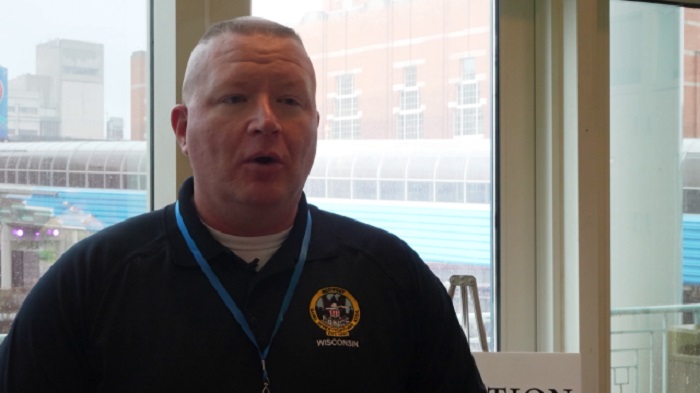LANSING, Mich. — Law enforcement officials from across the country gathered in Lansing for a critical conference hosted by the Midwest Gang Investigators Association, aiming to address the escalating problem of organized crime in the region. The event brought together some of the nation’s top gang violence investigators to discuss the growing concerns that are challenging local communities and law enforcement agencies.
Brad Schlosstein, a member of the association, spoke to the increasing presence of organized gangs in the Midwest, noting a troubling rise in West Coast Hispanic gangs, particularly the Serenos and Nortenos. These groups, once primarily a West Coast issue, have made their way into Midwestern cities, adding to the already significant presence of Chicago-based gangs, such as the Gangster Disciples, Vice Lords, and Latin Kings.
“We do have a rise in West Coast Hispanic gangs here in the Midwest with our Serenos and Nortenos,” Schlosstein said. “And then our Chicago-based gangs are still active, whether it be our Gangster Disciples, Vice Lords, or Latin Kings.”
But gang violence isn’t the only issue facing law enforcement. Investigators at the conference also expressed growing concern over the rise of political groups that are increasingly adopting gang-like behaviors. Schlosstein highlighted the surge in white supremacy activity and sovereign citizen movements—groups with anti-government ideologies that are becoming more violent and using intimidation tactics to exert power over local communities.
“We’re currently seeing a rise in our white supremacy activity,” Schlosstein noted. “We’re also seeing a rise in sovereign citizens, those who have anti-government ideology. It’s not the same as from the 60s, 70s, and 80s, but now they’re becoming more violent using that power of intimidation, again, back into the communities.”
The expansion of gang activity has serious consequences for local communities. Experts warn that as gangs move in, there is typically a significant uptick in serious crime, much of which local law enforcement is ill-equipped to handle. Schlosstein emphasized the multifaceted nature of these crimes, which now include drug trafficking, human trafficking, illegal weapons trade, and the circulation of counterfeit products.
“We’re starting to see the drugs coming into the community,” Schlosstein said. “We’re starting to see human trafficking, illegal weapons coming into the community, and counterfeit products coming into the community as well.”
One of the most troubling aspects of the current gang landscape is the interstate nature of these operations. As criminal organizations expand across state lines, law enforcement agencies must find ways to collaborate and share intelligence more effectively. The challenge lies in coordinating efforts among different jurisdictions, as criminal groups can be just as mobile and adaptable as the officers trying to track them.
“A lot of our gang members, they can tell if we know what we’re talking about,” Schlosstein explained. “They can tell when we’re providing false information, pretending to know what we’re talking about. So we make sure that we have that updated education for investigators working on these types of cases.”
Conferences like the one in Lansing play a vital role in keeping law enforcement agencies ahead of the curve. Officers and investigators are given the opportunity to exchange information, discuss the latest trends in organized crime, and learn about the newest technologies available to support their efforts. This year, much of the focus was on using advanced tools such as artificial intelligence (AI) to enhance intelligence reports and crime analytics, allowing officers to better predict and respond to criminal activities.
“We’re focusing on having that secure way to share information, get the intelligence out there,” Schlosstein said. “So if something’s going on in Indiana, it may end up in Wisconsin as little as a couple of days. It’s a bridge of networking and making sure that people working in law enforcement and corrections, they’re not on their own when they’re investigating these cases.”
With gangs evolving to operate on a broader scale, the ability to share information quickly and securely is becoming more critical than ever. Law enforcement officers are finding that staying ahead of organized crime requires not just vigilance but also a commitment to learning and adapting to new challenges. As gang violence continues to rise, so does the need for collaboration, updated training, and cutting-edge technology to combat this growing threat.












